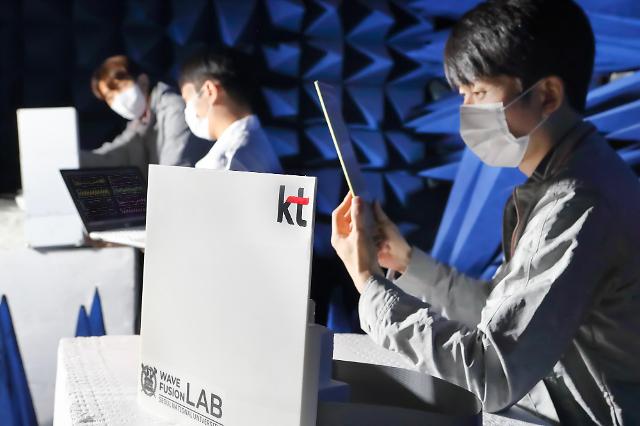
[Courtesy of KT]
RIS is regarded as a cost-effective technique that can enhance the spectrum efficiency of wireless networks. It adjusts transmission power according to the characteristics of radio waves and can improve the coverage of radio reception shaded areas by transmitting external signals into buildings or reflecting them at necessary angles to avoid obstacles.
Terahertz (THz) is a unit of frequency defined as one trillion cycles per second. 6G has a shorter transmission distance than 5G. Base stations should be built more closely than 5G to eliminate shaded areas. The 6G THz frequency band includes an enormous amount of available spectrums.
KT said the quality of wireless communication in shaded areas at its office building was improved using RIS, which has been developed in collaboration with a Seoul National University (SNU) research team. "It is meaningful that we have successfully developed and verified a large-area RIS technology that can expand the coverage area even if it is randomly aligned and installed with wireless transceivers," SNU's electrical and information engineering professor Oh Jung-seok said in a statement on November 15.
"We will upgrade domestic 5G services by leading technology development that strengthens the quality of wireless networks and improve 6G competitiveness," said KT's infra research and development director Lee Jong-sik. Companies have tied up with research bodies to secure core 6G technologies and achieve the world's first commercialization of 6G mobile telecommunication in 2028.
Copyright ⓒ Aju Press All rights reserved.



